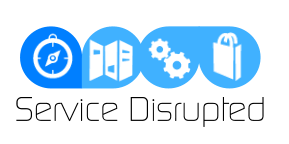Customer Journey Mapping
Image Courtesy of UXMatters
Journey mapping is a structured visualisation of a service's user experience. Although there is no standard agreed upon format, the journey map typically illustrates service touchpoints, and customer emotions on the journey from pre-service to post-service delivery. Service delivery is typically multi-channelled and time-based and leverages multiple information sources. By providing service designers with a longitudinal view of the customer experience, service designers can identify problems and opportunities for service innovation. It also allows the service designer to reflect on individual touchpoints and to analyse discrete stages of the customer journey. As all service users will differ, customer journey maps are typically created for multiple user types, or personas. This allows the service designer to compare several customer experiences. Some of the links below provide some excellent examples of how customer journey maps are being used by organisations to improve user experience and service delivery.
Further Reading:
http://desonance.wordpress.com/2010/06/16/customer-experience-mapping/
http://blogs.hbr.org/cs/2010/11/using_customer_journey_maps_to.html
http://sixrevisions.com/user-experience-ux/customer-journey-maps/
Personas
Image Courtesy of UXEvolved
Personas are fictional user archetypes which are used to communicate design information to users and software developers. The use of personas as a design tool was first popularised by Cooper (1997) in his book “The Inmates are Running the Asylum” where he advocated the use of roughly sketched fictional characters as a tool for improving interaction design. Since then, the use of personas has become well established within the fields of user experience (Kuniavsky, 2003), user-centred design (Nivala et al., 2011) and software engineering (Pruitt and Grudin, 2003). Although Cooper (1997) initially advocated the use of rough sketches, the method has evolved to incorporate quantitative and qualitative data (cf. Pruitt and Adlin, 2006; Acuña et al., 2012). To this end, personas have been used both as a means of gathering data and also presenting data gathered using others means (Meissner and Blake, 2011).
The persona method provides a deterrent to the creation of big upfront user requirements in favour of a small subset of archetype users. As Cooper (1997, p. 123) states “merely being the victim of a particular problem doesn’t automatically bestow on one the power to see its solution”. A study by Long (2009) showed that persona use was most successful during the early stages of a design project and was particularly useful in identification of target audience and user requirements gathering. Moreover, design teams using the persona method were able to identify and address problems quicker than those who did not use the method.
Personas provide designers with a proven method of avoiding personal biases and assumption in the design process (Putnam et al., 2009). Moreover, personas provide a mechanism for bringing stakeholders into conversations concerning the design process and allow the development team to focus on user behaviour rather than customer demographics (Moule, 2012). Indeed, Pruitt and Grudin (2003, p. 314) state that the effectiveness of personas to provide “a shared basis for communication” is one of the method’s greatest strengths. Such a feature promotes consensus and efficiency of decision making (Mulder and Yaar, 2007) and allows system designers to communication with a wide variety of stakeholders including: developers, designers, software testers, managers, marketers and users (Pruitt and Grudin, 2003). Indeed, research on the effectiveness of personas in culturally diverse settings (cf. Meissner, and Blake, 2011; Putnam et al., 2009) reiterates the effectiveness of personas in overcoming communications breakdowns.
Further Reading:
http://wiki.fluidproject.org/display/fluid/Persona+Format
http://www.lukew.com/ff/entry.asp?1241
http://continuuminnovation.com/good-reasons-to-create-great-personas/
Touchpoint
For every service there is a provider and consumer of that service. A touchpoint is a mechanisms through which the service consumer interacts with the service provider. Frequently there will be many touchpoints between the service provider and the service consumer. For example, to purchase a cup of coffee the consumer may interact with the product (cup of coffee), the physical coffee store, the barista etc. Every touchpoint provides an opportunity to improve the provision of a given service.
Further Reading:


